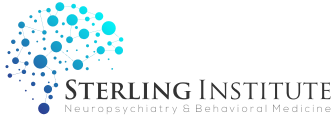TMS: Enhancing Neuroplasticity and Neural Pathway Development for the Treatment of Depression and Anxiety
Transcranial Magnetic Stimulation (TMS) is an innovative noninvasive technique used to relieve depression and anxiety in adults and adolescents through targeted brain stimulation, generating neuroplastic changes with many fewer side effects than drugs. TMS employs small, precise magnetic pulses to activate regions controlling mood and emotion, promoting neurogenesis and connectivity between neurons in the left (for depression) and/or right (for anxiety) dorsolateral prefrontal cortex, reducing symptoms at higher rates on average than pharmaceuticals.

TMS and Brain Network Development
TMS works by transmitting magnetic waves at the surface of the head to stimulate neuronal activity, specifically targeting areas linked to regulating affect and stress responses. By activating these areas, particularly the left DLPFC, TMS encourages the development of new brain cells, or neurogenesis, and new connections between cells, with immense potential to counterbalance the damaging effects of sustained distress, low mood, and worry.
Beyond provoking new brain cell proliferation, TMS also strengthens the communication between neurons through synapse formation and reinforcement. The magnetic pulses activate targeted regions that are underactive, fostering the elaboration of new connections and bolstering existing ones. This enhanced interneuronal networking leads to optimized emotional and anxiety regulation, creating a more active integration with the rest of the brain.
Advantages of TMS over Traditional Medications
TMS offers numerous benefits compared to prescription medication. Principally, it has a higher rate of success on average since it targets directly the critical brain regions responsible for depression and anxiety. This narrow focus allows TMS to address the root causes of these conditions more effectively than medication which is spread throughout the entire body.
Another major advantage is that TMS comes with minimal unwanted side effects. Unlike medication, which disperse systemically and frequently cause a wide range of side effects, TMS confines its activation solely to the impacted brain regions. By staying local instead of becoming general, TMS significantly reduces safety concerns, making it a much more tolerable option for many individuals.
The Circular Nature of Magnetic Fields in TMS
There is a straightforward reason rooted in physics why TMS is so safe: the energy being used is magnetic rather than electric as with electroconvulsive therapy (“shock therapy”). Magnetic fields circulate continuously with no starting or ending point. They are very different than electrical fields that follow linear paths from one point to another. Picture a magnetic force as a continuously spinning circle indicated by arrowheads, rotating ceaselessly within itself. But an electric field moves in a straight line from source to destination. When the destination is the brain, electrical energy is “deposited” in neuronal tissue and has the potential for harm.

The Relationship Between Electric and Magnetic Forces
You may be familiar with the expression “electromagnetic.” Fascinating connections link electric and magnetic forces. Everyday visible light itself consists of both kinds of fields interacting—a fusion of electricity and magnetism. Unraveling the full implications of this relationship took the combined insights of pioneering scientists like Maxwell and Einstein. In essence, TMS (like MRI imaging) transforms pure electric power from the wall socket into a circulating magnetic force that passes through the target region. No additional energy is nor can be “deposited’ by it.
ECT (“electro” convulsive therapy) energizes brain tissue so severely that it induces a seizure. Indeed, that’s what it is meant to because of the discovery that such seizures can have a potent anti-depressant effect, along with its risks.
But magnetic fields transfer no energy. Industrial magnets can lift huge vehicles yet someone standing nearby experiences no negative effects whatsoever.
At the Yale physics department there lies a peculiar device known as a quadrature magnet. Through an ingenious arrangement of individual magnets, this apparatus generates a roughly spherical magnetic field with minimum intensity at its core. The strength of the field increases dramatically the farther one moves from the center, growing millions of times stronger than that of an MRI or TMS device. The field is so strong that if you place a frog at the center it levitates thanks to the ultra-miniscule amount of iron in the hemoglobin in its red blood cells. It is completely unharmed.

You can make a miniature two-dimensional “quadrature” field of your own. Arrange four magnets on a flat surface in a cross so that one lies pointing north, another pointing south, a third left and the fourth right with its south. Leave an empty space at the center. Place an iron ball bearing there and no matter which way you roll it, it returns to center just as the frog does in three dimensions.

Further reading:
https://www.sciencedirect.com/science/article/abs/pii/S0165032720324393

